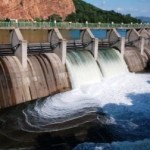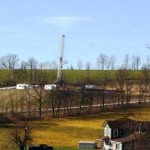 Global food demand could double by 2050, according to a new projection reported in the journal ‘Proceedings of the National Academy of Sciences (PNAS)’. The analysis also shows that the world faces major environmental challenges unless agricultural practices change.
Global food demand could double by 2050, according to a new projection reported in the journal ‘Proceedings of the National Academy of Sciences (PNAS)’. The analysis also shows that the world faces major environmental challenges unless agricultural practices change.
Scientists David Tilman and Jason Hill of the University of Minnesota (UMN) and colleagues found that producing the amount of food needed could significantly increase levels of carbon dioxide and nitrogen in the environment, and may cause the extinction of numerous species.
These problems can be avoided, the researchers say, if the high-yielding technologies of wealthier nations are adapted to work in poorer nations, and if all countries use nitrogen fertilizers more efficiently.
In their paper, the scientists explore various ways of meeting the demand for food, and their environmental effects.
The options, they found, are to increase productivity on existing agricultural land, clear more land, or a combination of both. They also consider various scenarios in which the amount of nitrogen use, land cleared, and resulting greenhouse gas emissions differ.
“Agriculture’s greenhouse gas emissions could double by 2050 if current trends in global food production continue,” Tilman said. “This would be a major problem, since global agriculture already accounts for a third of all greenhouse gas emissions.”
“Ever increasing global demands for food pit environmental health against human prosperity,” said Saran Twombly, Program Director in the National Science Foundation (NSF)‘s Division of Environmental Biology, which funded the research. “These assessments show that agricultural intensification, through improved agronomic practices and technology transfer, best ensure the latter with minimal costs to the former,” Twombly said.
“The results challenge wealthy nations to invest technologically in under-yielding nations to alter the current global trajectory of agricultural expansion,” she believes. “Identifying the economic and political incentives needed to realize this investment is the critical next step.”
The environmental effects of meeting the demand for food depend on how global agriculture expands.
The research shows that adopting nitrogen-efficient “intensive” farming can meet future global food demand with much lower environmental effects, vs. the “extensive” farming practiced by many poor nations, which clears land to produce more food. The potential benefits are great, the researchers believe.
 In 2005, crop yields for the wealthiest nations were more than 300 percent higher than yields for the poorest nations.
In 2005, crop yields for the wealthiest nations were more than 300 percent higher than yields for the poorest nations.
“Strategically intensifying crop production in developing and least-developed nations would reduce the overall environmental harm caused by food production, as well as provide a more equitable food supply across the globe,” said Hill.
If poorer nations continue current practices, they will clear a land area larger than the United States (two and a half billion acres) by 2050. But if richer nations help poorer nations to improve yields, that number could be reduced to half a billion acres.
“Our analyses show that we can save most of the Earth’s remaining ecosystems,” said Tilman, “by helping the poorer nations of the world feed themselves.”
Scientists Christian Balzer of the University of California Santa Barbara and Belinda Befort of UMN are also co-authors of the paper.
Details of the Paper:
About NSF
The National Science Foundation (NSF) is an independent federal agency that supports fundamental research and education across all fields of science and engineering. In fiscal year (FY) 2011, its budget is about $ 6.9 billion. NSF funds reach all 50 states through grants to nearly 2,000 universities and institutions. Each year, NSF receives over 45,000 competitive requests for funding, and makes over 11,500 new funding awards. NSF also awards over $ 400 million in professional and service contracts yearly. For more information, visit www.nsf.gov.
Source: NSF.












